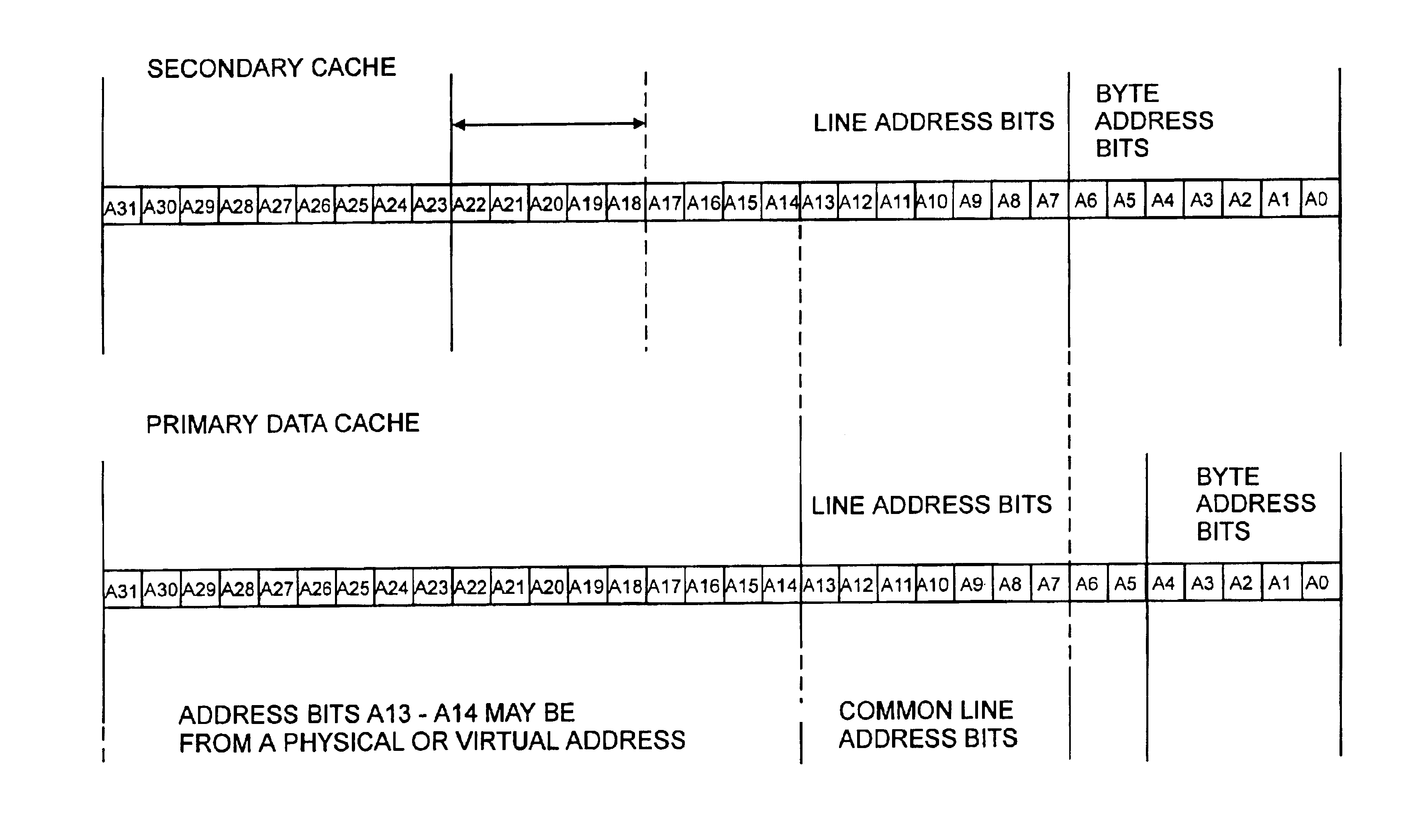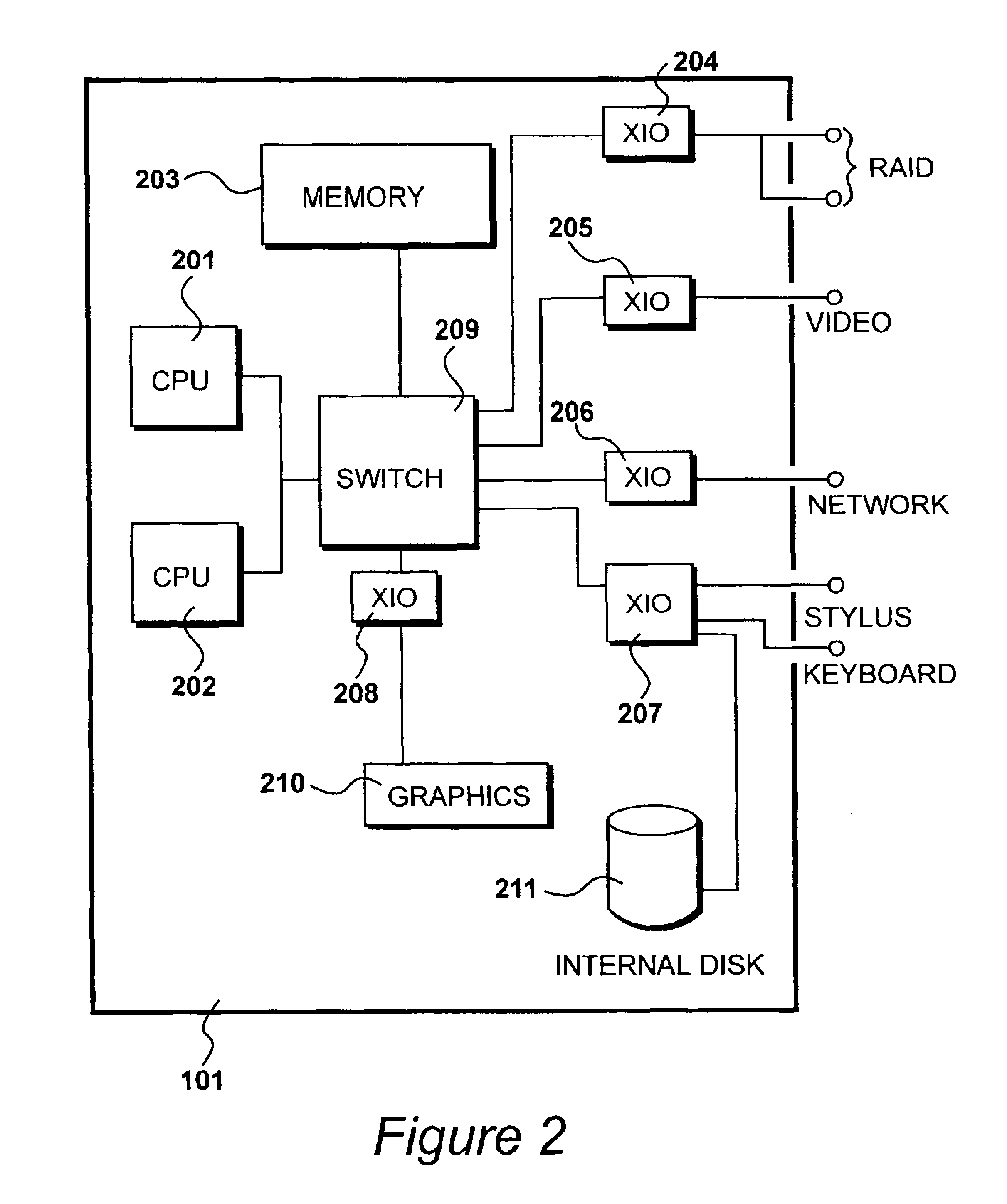Addressing a cache
- Summary
- Abstract
- Description
- Claims
- Application Information
AI Technical Summary
Benefits of technology
Problems solved by technology
Method used
Image
Examples
Embodiment Construction
[0027]A system for editing and generating image data and other types of data is illustrated in FIG. 1. A processing system 101, such as an Octane™ produced by Silicon Graphics Inc., supplies image signals to a video display unit 102. Moving image data is stored on a striped redundant array of inexpensive discs (RAID) 103. The RAID is configured in such a way as to store a large volume of data, and to supply this data at a high bandwidth, when required, to the processing system 101. The operator controls the processing environment formed by the processing system 101, the video monitor 102 and the RAID 103, by means of a keyboard 104, and a stylus-operated graphics tablet 105. Instructions controlling the processing system 101 interpret user commands from the keyboard 104 and the graphics tablet 105, such that moving image data, and other media data, may be viewed, edited and stored to define a scene.
[0028]A short sequence of video frames, usually from one particular camera, is known ...
PUM
 Login to View More
Login to View More Abstract
Description
Claims
Application Information
 Login to View More
Login to View More - R&D
- Intellectual Property
- Life Sciences
- Materials
- Tech Scout
- Unparalleled Data Quality
- Higher Quality Content
- 60% Fewer Hallucinations
Browse by: Latest US Patents, China's latest patents, Technical Efficacy Thesaurus, Application Domain, Technology Topic, Popular Technical Reports.
© 2025 PatSnap. All rights reserved.Legal|Privacy policy|Modern Slavery Act Transparency Statement|Sitemap|About US| Contact US: help@patsnap.com



